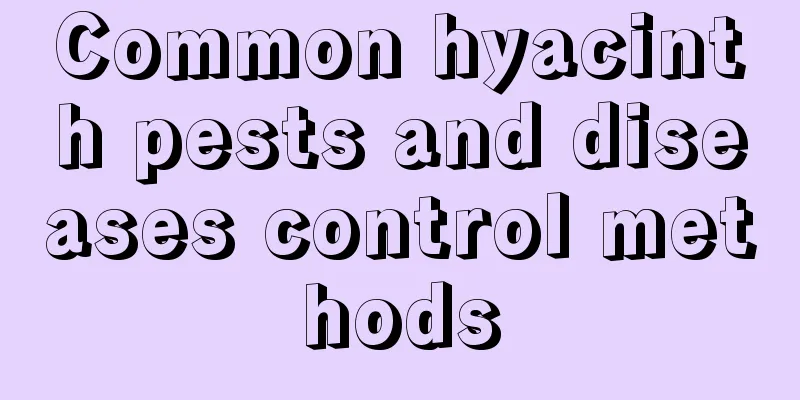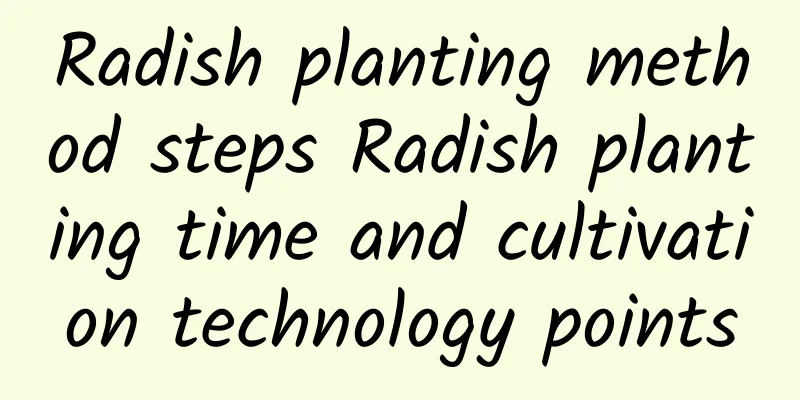Common hyacinth pests and diseases control methods

Yellow rotsymptomWhen the disease occurs, many spots will appear on the leaves of the plant, as if they had been flooded. The lesions gradually turn yellow or brown, the bulbs produce yellow mucus and begin to rot. Prevention and treatment methodsChoose strong, sterile bulbs when planting. Before planting, disinfect the bulbs and soil with formalin solution. If you want to do hydroponics, you must use unpolluted clean water. When the disease occurs, you can spray carbendazim solution once every 2 to 3 days. The symptoms will be relieved after 3 to 5 sprays. SclerotiniasymptomThe main site of disease occurrence is the bulb, which gradually migrates upward, and the leaves turn yellow and yellow streaks appear. Prevention and treatment methodsChoose strong, sterile bulbs when planting. Disinfect the potting soil with pentachloronitrobenzene, sprinkle it directly on the soil, stir evenly and then plant. Diseased plants should be dealt with promptly and diseased leaves should be removed promptly. Botrytis cinereasymptomThe leaf tips change color and the leaves become wrinkled. If the environment is too cold or too humid, the flower stems will easily rot. In severe cases, gray sclerotia will appear on the leaves. In particular, the pathogen will produce spores when it overwinters in the soil, accelerating its spread. Prevention and treatment methodsReduce the source of infection: remove diseased leaves as soon as they are found. Chemical control: Spray Bordeaux mixture, mix it in a ratio of 1:1000, spray 2 to 3 times, with an interval of 1 to 2 days. ClubrootsymptomIt mainly harms the roots. When the disease first occurs, the roots grow normally. When they grow to a certain extent, many small white tumors will grow on the roots. The plant grows weakly, the flowers sometimes shrivel, and in severe cases the whole plant dies. Prevention and treatment methodsDuring the storage period of the bulbs, they must be strictly disinfected and sterilized, and the storage environment must be well ventilated and at an appropriate temperature. Check once a week to see if there are any abnormalities. If diseased plants are found, burn them immediately. The soil must be disinfected before planting. Maintain the plant carefully and remove any dead branches and leaves on the soil surface in time. Do not turn the roots frequently during maintenance to avoid damaging the root system and increasing the probability of disease. |
<<: Disease prevention and control of wolfberry
>>: Common diseases and prevention of Phalaenopsis
Recommend
Can litchi be grown in the north? How to grow litchi in greenhouses in the north
Planting lychees in the north Lychees can be grow...
Colorful pepper planting time and method
Colorful pepper planting time Colorful peppers li...
Can coffee water be used to water flowers? What plants and flowers are suitable for watering?
Can coffee water be used to water flowers? Coffee...
How to grow white orchid
1. Breeding environment (1) Temperature: White or...
What are the cultivation methods and precautions for hydrangea
How to grow hydrangea Hydrangea is a plant of the...
Homemade Insect Recipes
In the process of growing flowers and plants, we ...
There are many "magic tools" for growing flowers. Just put some "bricks" in the flowerpot and the flowers will grow more and more vigorously!
Not long ago, Huahua discovered a magical tool fo...
How to cultivate small-leaf red sandalwood
Growth conditions of red sandalwood Dalbergia sma...
What is the reason for the growth of aerial roots in succulent plants and what to do
1. Soil drought Reason: If the soil is dry for a ...
Why is the fortune tree shedding leaves? How to solve it
1. Improper lighting Reason: The money tree grows...
How to cultivate twig flower
Growing conditions of twig flower The branch flow...
How to grow roses in winter
1. Pruning Pruning is needed after the beginning ...
Apple Growing Conditions and Characteristics
Apple Growing Conditions Apples are suitable for ...
The difference between elmleaf plum and peach
Different families Prunus armeniaca is a plant of...
These 6 kinds of flowers are the most "addictive", growing one will make you healthier!
Jasmine Main function: Kill harmful bacteria such...









